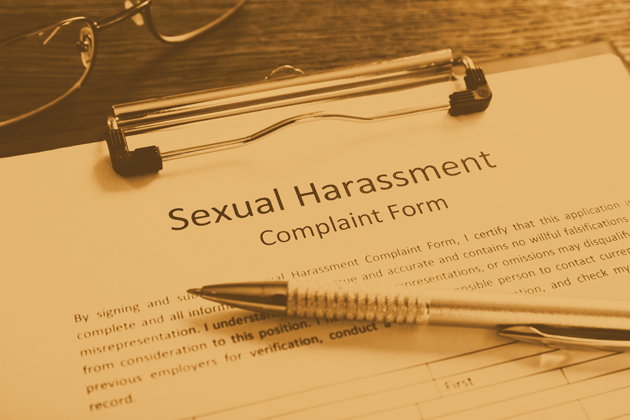
Sexual misconduct by a company executive or employee can result in a wide variety of legal claims against the company itself. If the victim is an employee, a supervisor’s unwanted sexual advances or other conduct of a sexual nature can form the basis for a sexual harassment claim against the employer under Title VII of the Civil Rights Act. If the accuser is not an employee, the company may be subject to liability for the bad actor’s conduct under negligent hiring or supervisions theories.
Sexual misconduct allegations can spawn litigation beyond claims by the alleged victim as well. For example, former Uber CEO Travis Kalanick was sued by an early investor in the company following widely-publicized allegations of sexual harassment and gender discrimination. The investor asserted that Kalanick’s failure to disclose the alleged misconduct gave rise to claims for fraud, breach of contract and breach of fiduciary duty.
It is also not uncommon for the alleged perpetrator to file a suit claiming defamation following public allegations of sexual misconduct. For example, Dov Charney, former CEO of American Apparel, sued his former company and a hedge fund for defamation, alleging that both sought to damage his personal and professional reputation by suggesting to third parties that he had engaged in criminal misconduct of a sexual nature.
Because no single insurance policy will provide coverage for every type of claim that may result from misconduct allegations, policyholders should look carefully at the following coverages:
Employment Practices Liability Insurance
Employment practices liability insurance (EPLI) is the most likely source of coverage for sexual misconduct claims asserted by employees. EPLI generally covers claims made by employees based on employment-related misconduct of their superiors or co-workers. Most policies expressly cover claims for sexual harassment, wrongful termination, discrimination and retaliation and some provide coverage for additional employment-related claims such as defamation or negligent retention and supervision. Some EPLI policies also cover claims that are made by non-employees, such as customers or vendors, in addition to claims by employees.
A significant limitation is the common EPLI exclusion for claims alleging bodily injury. Thus, while claims for verbal sexual harassment may be covered under an EPLI policy, claims for physical sexual assault typically are not. If a claimant alleges both verbal and physical harassment or assault, an EPLI policy may provide at least partial coverage.
General Liability
Some claims arising out of alleged sexual misconduct may be covered under a general liability (GL) policy. Most GL policies provide coverage for claims alleging “personal injury,” which typically is defined to include defamation. Thus, a defamation suit by an accused harasser, like the American Apparel lawsuit, could be covered under a GL policy.
Unlike EPLI policies, GL policies also cover claims for “bodily injury.” Although a direct claim for physical assault would likely be subject to the standard policy exclusion for injuries that are “expected or intended,” some courts have found that this exclusion does not apply to a claim against a company for the negligent hiring or supervision of an individual who commits a sexual assault. Another limitation on coverage under GL policies is the standard exclusion for claims made by employees of the policyholder. Some courts, however, have found that such claims are covered where the alleged misconduct occurred outside the workplace or were otherwise unrelated to employment.
Directors and Officers
D&O insurance is another potential source of coverage for some sexual misconduct-related claims. D&O insurance generally provides indemnification coverage for the “wrongful acts” of a company’s directors and officers and, frequently, its general employees. Many policies also cover claims against the entity itself, but such coverage is generally narrower than the coverage for insured individuals.
D&O policies typically cover claims for fraud or breach of fiduciary duty, such as in the Uber lawsuit. Coverage for sexual misconduct claims is limited by standard exclusions for bodily injury, which may extend to claims for mental anguish, humiliation and emotional distress, and exclusions for “willful or intentional” misconduct. D&O policies also typically contain an “insured vs. insured” exclusion, which may bar coverage for claims made by employees against the company.
Crisis Management or Reputation Risk
The reputation damage caused by sexual misconduct allegations may be more costly to a business than any other litigation expenses it will incur. Crisis management insurance and reputation risk insurance are two newer forms of coverage that seek to address the risk negative publicity poses to a company’s bottom line. When a triggering event occurs, crisis management insurance typically pays for the hiring of a public relations firm to respond to the issue. Reputation risk insurance generally provides coverage for actual business loss sustained as the result of a negative publicity event. Coverages and policy forms for the two types of insurance vary widely, and sexual misconduct-related events may or may not be covered, depending on the coverage purchased.
Pursuit of Coverage
When a sexual misconduct claim is made against a company or one of its executives or employees, the company should immediately report the claim to all of its liability carriers, even if it is unclear whether there may be coverage under a given policy. When tendering claims and engaging in negotiations with insurers, policyholders and risk managers should not accept at face value any conventional wisdom on what types of liability are covered. If an insurance carrier initially denies coverage, a company should not accept this response without testing its basis and, if necessary, consulting insurance recovery counsel.
